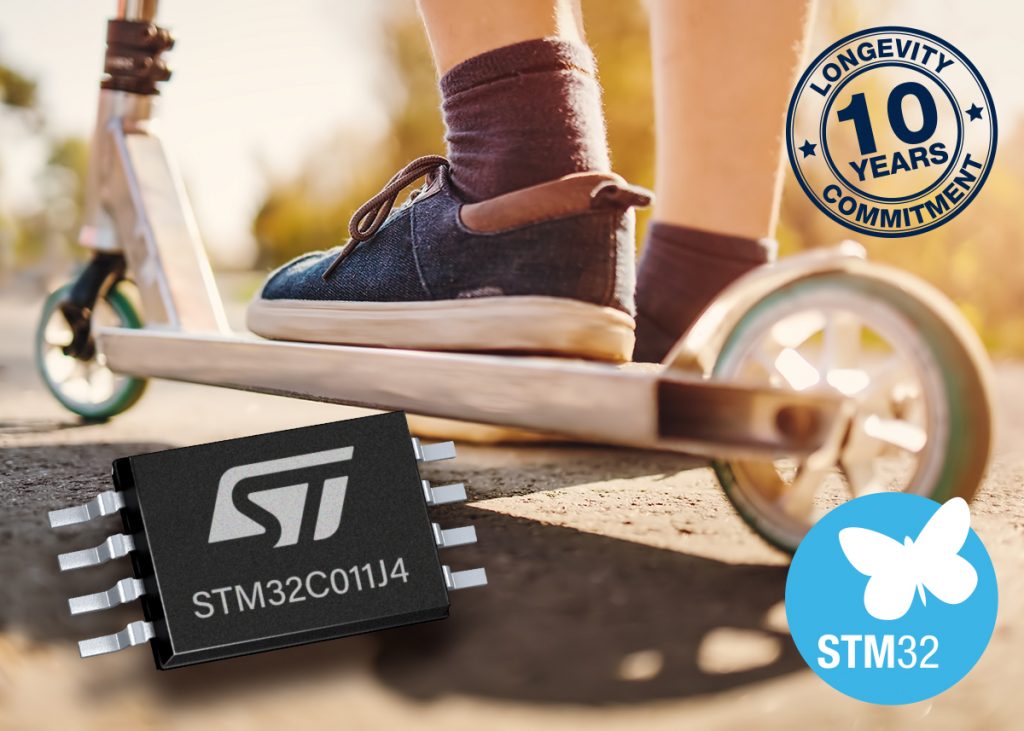Entry-level 32-bit MCU fits cost-sensitive applications
The compact new STM32C0x1 series of 32-bit microcontrollers, supplied at a price point that competes with many 8-bit MCUs, provides extra performance, memory provision and functionality compared to 8-bit architectures.

STMicroelectronics introduced the STM32C0 family of entry-level 32-bit microcontrollers for designers developing applications usually served by 8- or 16-bit MCUs.
The 32-bit MCUs available today, designated with STM32C0x1 part numbers, allow engineers to upgrade an 8- or 16-bit design with minimal impact on bill-of-materials cost. What is more, these MCUs provide support for additional software resources, hardware capabilities, and tools from the proven STM32 ecosystem.
The STM32C0x1 series offers up to 32 kbytes of Flash memory, and between 6 kbytes and 12 kbytes of RAM. The MCUs are available in a variety of 8- to 48-pin packages, including a 12-pin WLCSP, and a 3 mm x 3 mm 20-pin UFQFPN package.
The STM32C0x1 line of MCUs is based on a 48 MHz Arm® Cortex®-M0+ core that achieves a CoreMark® score of 114. The MCUs offer a range of peripheral features:
- Fast 12-bit ADC with hardware resolution up to 16-bit
- Flexible mapping on DMA channels
- Timers with advanced control capability
- Various communications peripherals including two UART interfaces
The STM32C0 family offers a pinout that is compatible with the higher performance STM32G0 family, and shares the same technological platform, to provide a scalable upgrade path.
To assist designers in the transition from an 8- to a 32-bit design architecture, ST has published application note AN5775, which provides guidelines for moving from an 8-bit STM8L or STM328S to the STM32C0. The note covers peripheral migration, and shows that moving to a 32-bit architecture means an increase in code size of only 6% to 15% in most cases. A webinar is also available on demand.
STM32 tools such as the STM32CubeMX and the STM32CubeIDE, the STM32CubeProgrammer debug software, and STM32Cube expansion packages optimize workflows and help engineers to reuse code or modules.
